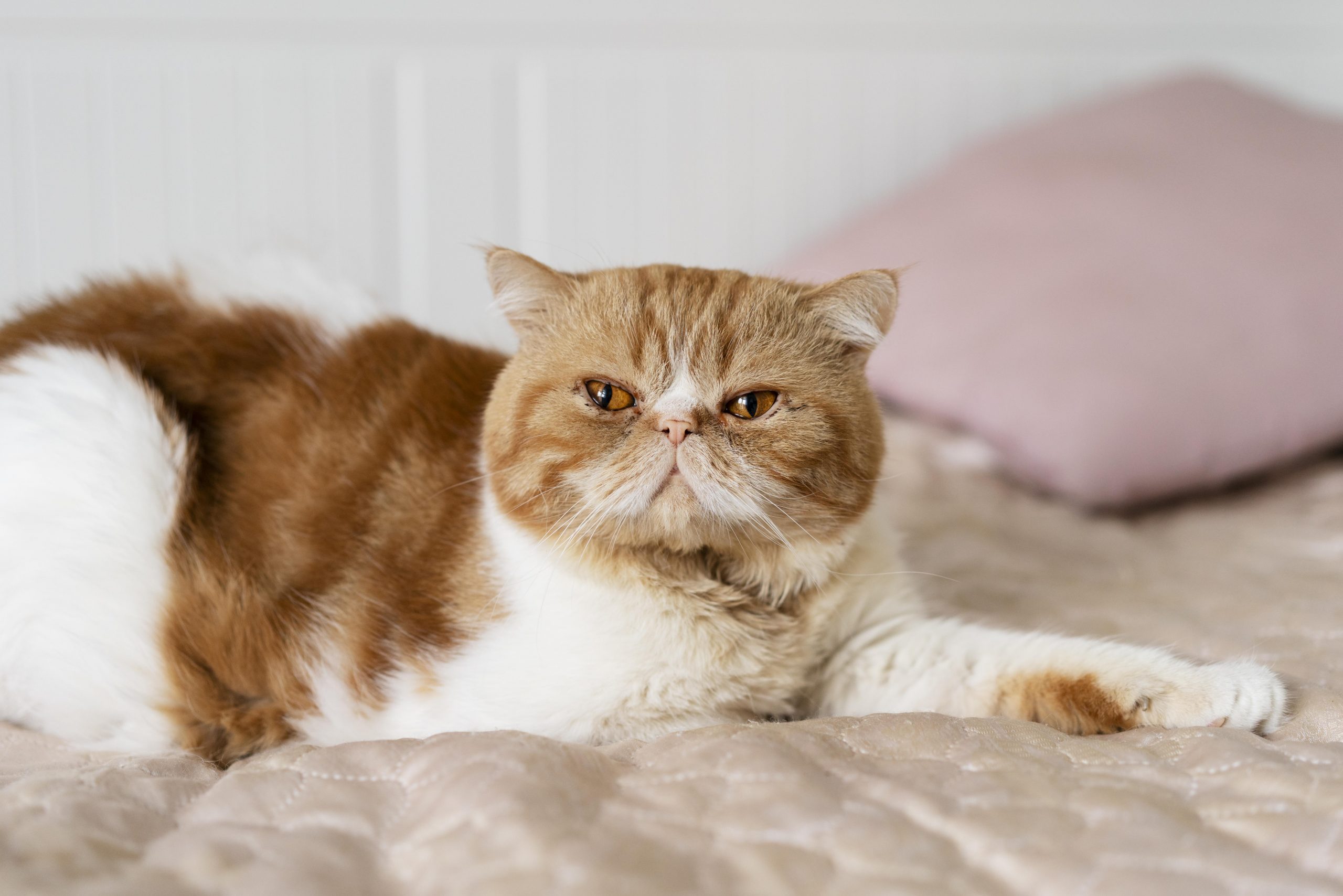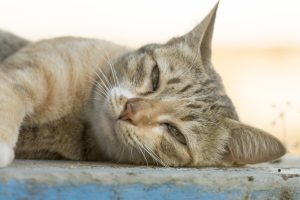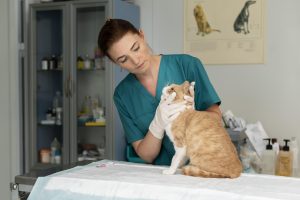Cat Flu: Symptoms, Treatment and Vet Costs

What Is Cat Flu?
Cat flu, also known as feline respiratory disease, is a common illness that affects domestic cats. It is caused by a combination of viruses and bacteria, including feline herpesvirus and feline calicivirus. Cat flu symptoms can vary from mild to severe, and it can be particularly dangerous for young kittens and older cats with weakened immune systems.
Is Cat Flu Contagious?
Yes, cat flu is highly contagious. It can spread quickly from one cat to another through direct contact, such as sneezing or sharing food and water bowls. It can also be transmitted indirectly through contaminated objects like bedding or toys. Cats in close quarters, such as shelters or multi-cat households, are at a higher risk of contracting cat flu.
Can My Cat Catch the Flu from Me?
No, cats cannot catch the flu from humans. The viruses that cause human flu differ from those that affect cats. However, it is still important to practice good hygiene when you have a cold or flu, as other respiratory illnesses can be transmitted to your cat.
Causes of Cat Flu
Cat flu is primarily caused by two main viruses: feline herpesvirus and feline calicivirus. These viruses are highly contagious and can survive in the environment for extended periods. Other viruses and bacteria, such as Chlamydophila felis and Bordetella bronchiseptica, can also contribute to the development of cat flu.
Symptoms of Cat Flu
The symptoms of cat flu can vary depending on the severity of the infection and the cat’s immune response. Common symptoms include sneezing, nasal discharge, coughing, fever, loss of appetite, and lethargy. Some cats may also develop ulcers on their tongue or eyes. It is crucial to monitor your cat closely for any signs of respiratory distress, as severe cases of cat flu can lead to pneumonia.
Vulnerability of Kittens and Older Cats
Kittens andolder cats are more vulnerable to cat flu due to their weaker immune systems. Kittens, especially those under six weeks old, have not fully developed their immune system and are more susceptible to severe complications. On the other hand, older cats may have a weakened immune response, making it harder for them to fight off the infection.
Diagnosis and Testing
If you suspect your cat has cat flu, it is important to take them to a veterinarian for a proper diagnosis. The vet will perform a physical examination and ask about your cat’s symptoms and medical history. In some cases, additional testing may be necessary to confirm the diagnosis and rule out other illnesses.
Ruling Out Other Illnesses
Several other respiratory illnesses can present with similar symptoms to cat flu. These include allergies, bacterial infections, and even certain types of cancer. our vet may perform a few diagnostic tests to rule out other potential causes. These can include swabs of the nasal or conjunctival discharge to test for the presence of the viruses or bacteria causing the infection. Additionally, blood tests can be conducted to check for antibodies against the viruses.
Treatment Options for Cat Flu
While there is no cure for cat flu, treatment focuses on managing the symptoms and preventing secondary complications. Your veterinarian may recommend the following treatment options:
Supportive Care
Providing supportive care is essential for cats with flu. This includes ensuring a warm and comfortable environment, access to fresh water, and a nutritious diet. Encouraging them to eat, even with a reduced appetite, is crucial for their recovery.
Antiviral Medications
To alleviate the impact and duration of the illness, veterinarians may recommend antiviral medications in certain instances. These drugs impede the replication of the viruses responsible for the infection. It’s crucial to note that their effectiveness is heightened when administered promptly at the onset of the illness.
Prescribed medications may include:
- Oseltamivir (Tamiflu)
- Zanamivir (Relenza)
- Rimantadine (Flumadine)
- Acyclovir
Antibiotics for Secondary Infections
Cat flu weakens the immune system, making cats more susceptible to secondary bacterial infections. If your vet suspects a bacterial infection, they may prescribe antibiotics. It is important to complete the full course of antibiotics as prescribed.
Symptomatic Relief (Eye and Nose Drops)
To relieve the discomfort caused by nasal congestion and eye discharge, your vet may recommend using saline eye and nose drops. These drops help flush out mucus and clean the nasal passages and eyes.
Importance of Isolation
To prevent the spread of cat flu to other cats, it is crucial to isolate the infected cat until they have fully recovered. This means keeping them away from other cats and providing a separate living space, food, water, and litter box. Proper hygiene, such as washing hands and disinfecting surfaces, is also important to minimize the risk of transmission.
Vet Costs and Potential Complications
Visiting the veterinarian for a cat flu diagnosis and treatment can incur associated costs. The exact cost can vary depending on various factors, such as the severity of the illness, diagnostic tests performed, medications prescribed, and any additional treatments required. It is essential to discuss the potential costs with your veterinarian beforehand to ensure you are prepared.
Veterinary Costs
A veterinary visit for cat flu can cost between $25 and $186, depending on the location and the veterinarian’s fees. Additional costs may be incurred for diagnostic tests, medications, and any necessary follow-up appointments.
Cost Variability
The cost of treating cat flu can vary significantly depending on the severity of the illness and any potential complications. Sometimes, hospitalization and more intensive treatments may be required, resulting in higher costs.
Common Complications
Cat flu can lead to various complications, especially in vulnerable cats such as kittens and older cats. These complications can include pneumonia, chronic respiratory problems, and eye or oral infections. Prompt veterinary care and proper treatment can help minimize the risk of complications and improve the chances of a full recovery.
How Can Pet Insurance Help With Cat Flu?
Pet insurance can be a valuable tool in managing the costs of treating dog periodontal disease and other veterinary expenses. By having a pet insurance policy in place, you can have peace of mind knowing that you can provide medical care for your furry companion without worrying about the financial burden. Pet insurance can help cover the costs of veterinary consultations, diagnostic tests, medications, and even specialized treatments if required.
Reimbursement
This method is the most common for pet insurance companies. You pay out of pocket for the veterinarian bill, and then the insurance company reimburses you for what’s covered under the insurance plan. The steps look like this.
- You pay the vet bill after your dog’s visit.
- You fill out the pet insurance claim form.
- Submit the claim form and other required documentation to the insurer.
- After the claim is approved, you will be reimbursed for eligible expenses.
What Does Odie Pet Insurance Cover?
Pet insurance covers various veterinary expenses, providing financial protection and peace of mind for pet owners. Here are the details of the coverage options offered by Odie Pet Insurance:
Illness & Injury Plan
The Illness & Injury Plan is an all-inclusive insurance plan designed to cover a wide range of medical needs for your pet. This plan includes comprehensive coverage for various illnesses, injuries, and veterinary services. Some of the covered items include:
- 24/7 Televet Chat
- Emergency vet visits
- Overnight hospital stays
- IV Fluids & Medications
- Medical Supplies
- Surgeries
- MRI/CAT Scans
- Rehabilitative Care
- Prescription Medications
- Gastrointestinal issues
- Laboratory Tests
Accident-Only Plan
The Accident-Only Plan is designed for pet owners seeking coverage specifically for accidents. This plan provides financial protection for emergency veterinary care resulting from accidental injuries. It includes 90% reimbursement up to $10,000 each year, with a $250 annual deductible.
Here’s an overview of the Accident-Only Plan:
- Coverage for broken bones, sprains, eye injuries, and traumatic dental fractures.
- Coverage for wounds, including bite wounds, lacerations, snake bites, and bee stings.
- Veterinary treatments covered for accidental injuries include X-rays & ultrasounds, laboratory tests, emergency care, hospitalization, CT scan & MRI, and surgery.
The Wellness Add-on Plan
The Wellness Plan is an add-on for routine care coverage you can purchase with an insurance policy. It focuses on preventive care and covers routine veterinary services. Odie has two wellness plan options available:
Basic Plan:
- Covers services such as spay/neuter and teeth cleaning, rabies vaccination, flea & tick prevention, heartworm prevention, vaccination/titer, wellness exam, heartworm test or FELV screen, blood, fecal, parasite exam, microchip, urinalysis or ERD, and deworming.
- Reimbursement up to $305 per year.
Plus Plan:
- Ideal for puppies and kittens.
- Covers services such as spay/neuter and teeth cleaning, rabies vaccination, flea & tick prevention, heartworm prevention, vaccination/titer, wellness exam, heartworm test or FELV screen, blood, fecal, parasite exam, microchip, urinalysis or ERD, and deworming.
- Reimbursement up to $535 per year.





